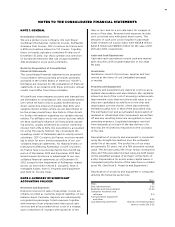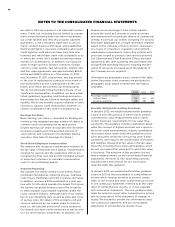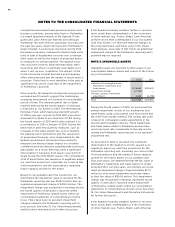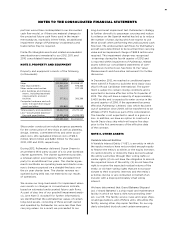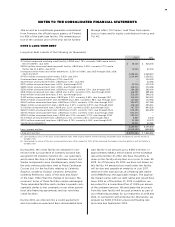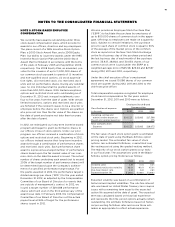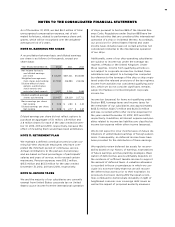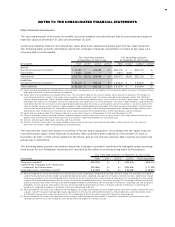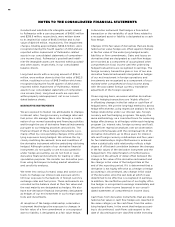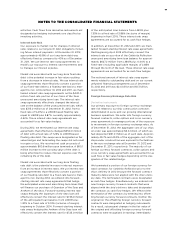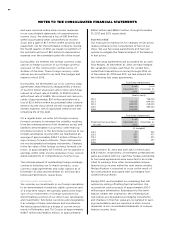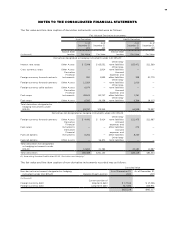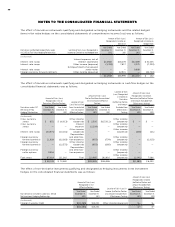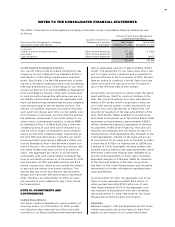Royal Caribbean Cruise Lines 2012 Annual Report Download - page 85
Download and view the complete annual report
Please find page 85 of the 2012 Royal Caribbean Cruise Lines annual report below. You can navigate through the pages in the report by either clicking on the pages listed below, or by using the keyword search tool below to find specific information within the annual report.
81
NOTES TO THE CONSOLIDATED FINANCIAL STATEMENTS
NOTE 9. STOCK-BASED EMPLOYEE
COMPENSATION
We currently have awards outstanding under three
stock-based compensation plans, which provide for
awards to our officers, directors and key employees.
The plans consist of a 1995 Incentive Stock Option
Plan, a 2000 Stock Award Plan, and a 2008 Equity
Plan. Our ability to issue new awards under the 1995
Incentive Stock Option Plan and the 2000 Stock
Award Plan terminated in accordance with the terms
of the plans in February 2005 and September 2009,
respectively. The 2008 Equity Plan, as amended, pro-
vides for the issuance of up to 11,000,000 shares of
our common stock pursuant to grants of (i) incentive
and non-qualified stock options, (ii) stock apprecia-
tion rights, (iii) restricted stock, (iv) restricted stock
units and (v) performance shares. During any calendar
year, no one individual shall be granted awards of
more than 500,000 shares. With limited exceptions,
options and restricted stock units outstanding as of
December 31, 2012 vest in equal installments over
four to five years from the date of grant. With certain
limited exceptions, options and restricted stock units
are forfeited if the recipient ceases to be a director or
employee before the shares vest. Options are granted
at a price not less than the fair value of the shares on
the date of grant and expire not later than ten years
after the date of grant.
In 2012, we redesigned our long-term incentive award
program and began to grant performance shares to
our officers in lieu of stock options. Under our prior
program, our officers received a combination of stock
options and restricted stock units. Beginning in 2012,
our officers instead receive their long-term incentive
awards through a combination of performance shares
and restricted stock units. Each performance share
award is expressed as a target number of performance
shares based upon the fair market value of our com-
mon stock on the date the award is issued. The actual
number of shares underlying each award (not to exceed
200% of the target number of performance shares) will
be determined based upon the Company’s achieve-
ment of a specified performance target range. For
the grants awarded in 2012, the performance target is
diluted earnings per share (“EPS”) for the year ended
December 31, 2012, as adjusted by the Compensation
Committee of our Board of Directors for events that
are outside of management’s control. In 2012, we
issued a target number of 329,088 performance
shares which will vest on the third anniversary of the
award issue date. In February 2013, the Compensation
Committee of our Board of Directors set the actual
payout level at 94% of target for the performance
shares issued in 2012.
We also provide an Employee Stock Purchase Plan
(“ESPP”) to facilitate the purchase by employees of
up to 800,000 shares of common stock in the aggre-
gate. Offerings to employees are made on a quarterly
basis. Subject to certain limitations, the purchase
price for each share of common stock is equal to 90%
of the average of the market prices of the common
stock as reported on the New York Stock Exchange
on the first business day of the purchase period and
the last business day of each month of the purchase
period. 35,927, 28,802, and 30,054 shares of our
common stock were issued under the ESPP at a
weighted-average price of $25.58, $29.46 and $27.87
during 2012, 2011 and 2010, respectively.
Under the chief executive officer’s employment
agreement, we issued 10,086 shares of our common
stock per quarter during 2012, 2011 and 2010 to the
chief executive officer.
Total compensation expense recognized for employee
stock-based compensation for the years ended
December 31, 2012, 2011 and 2010 were as follows:
Classification of expense
Employee Stock-Based
Compensation
(in thousands)
Marketing, selling and
administrative expenses
Payroll and related expenses — —
Total Compensation
Expense
The fair value of each stock option grant is estimated
on the date of grant using the Black-Scholes option
pricing model. The estimated fair value of stock
options, less estimated forfeitures, is amortized over
the vesting period using the graded-vesting method.
The majority of our stock option grants occur early
in our fiscal year. The assumptions used in the Black-
Scholes option-pricing model are as follows:
Dividend yield
Expected stock price volatility
Risk-free interest rate
Expected option life years years years
Expected volatility was based on a combination of
historical and implied volatilities. The risk-free interest
rate was based on United States Treasury zero coupon
issues with a remaining term equal to the expected
option life assumed at the date of grant. The expected
term was calculated based on historical experience
and represents the time period options actually remain
outstanding. We estimate forfeitures based on histori-
cal pre-vesting forfeiture rates and revise those esti-
mates as appropriate to reflect actual experience.


